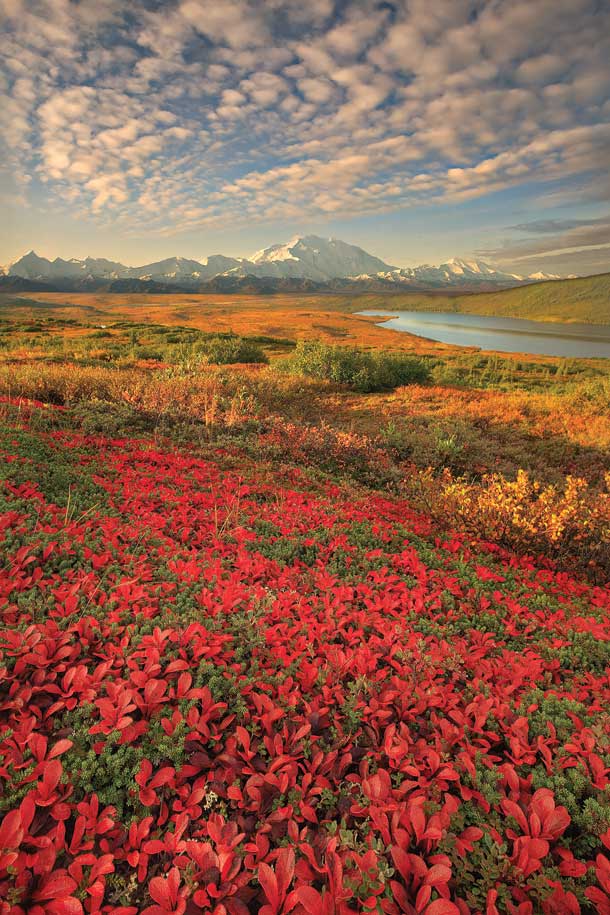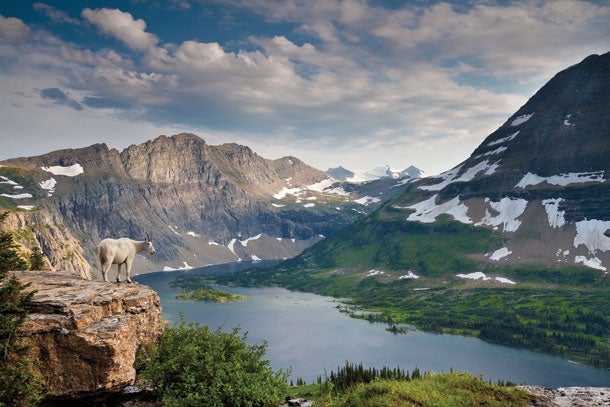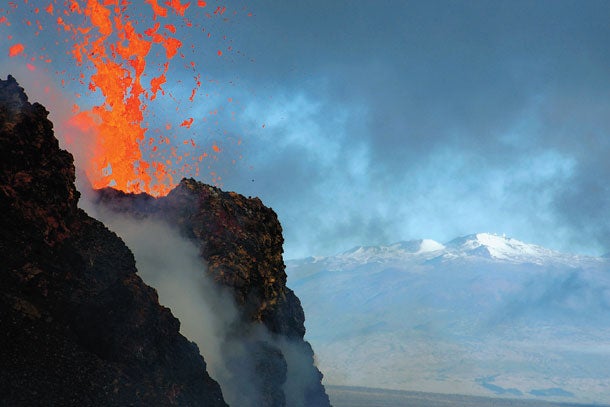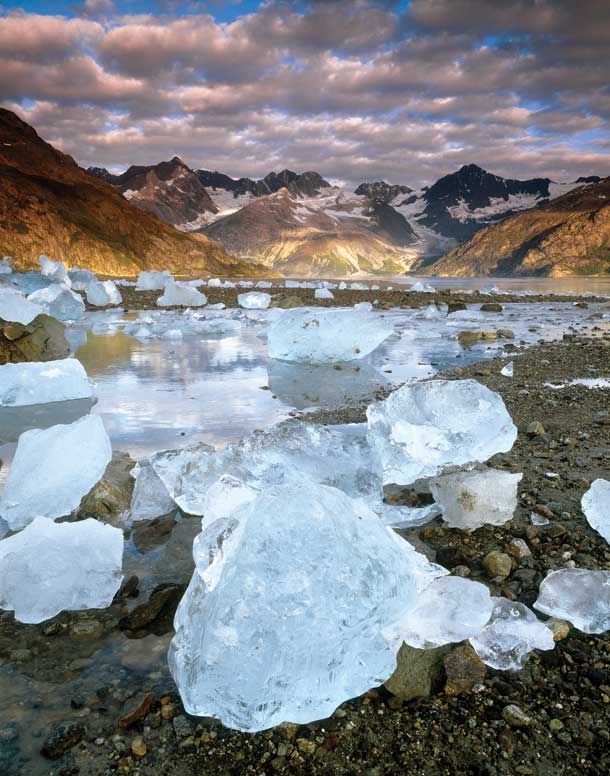Heading out the door? Read this article on the new Outside+ app available now on iOS devices for members! Download the app.
Acadia
An alpine start for the summit of 1,528-foot Cadillac Mountain yields a stunning gift: the first glimpse in the United States of the day’s sunrise. Paul Rezendes captured this scene at dawn, but he had to do more than get up early. He had spotted the patterned granite the previous day and knew he needed to shoot from above to nail the texture in the rock. So he hauled up a wooden step ladder in the predawn darkness and lashed a tripod on top with bungee cords. “I knew the sky was going to be much brighter than the granite and treeline, so I used a neutral-density graduated filter to keep the sky from overexposing the film,” he says.
>> Hike it: Download step-by-step directions for a 4.4-mile Cadillac loop at backpacker.com/hikes/10242.
>>Toyo 4×5; f/22, 6 seconds; ISO 50

Denali
Kevin McNeal left Wonder Lake two hours before sunrise and hiked to this view of Mt. McKinley. He timed his trip for bearberry season; it’s only this shade of red for a few weeks in late August. “I positioned the camera close to the ground to exaggerate perspective and really get the vibrancy of the foliage to come out at the viewer,” McNeal says. The sky? That’s luck. “For this particular situation, I needed to bracket the images to expose one for the sky and mountain and the other for the foreground.” At home, he used photo software to merge the two exposures into one image.
>> Hike it: Go to “Denali: Proving Ground” for an epic Denali route.
>> Canon 5D; f/16, 1/100; ISO 100

Glacier
When a mountain goat appeared above Hidden Lake, Ian Shive knew he’d lucked out. Only problem: low light and no tripod. Solution: burst mode. By pressing the shutter release once for five shots—not five times—you reduce camera shake. The sharpest image, says Shive, is usually the third.
>> Hike it: See page 30 in our June 2011 issue for our top multiday routes.
>> Canon 5D Mark II; f/7, 1/40; ISO 200

Hawaii Volcanoes
Bryan Lowry spent 13 years shooting here before capturing this rare image of lava (erupting from the park’s Pu’u O’o vent) and snow (on 13,679-foot Mauna Kea). After so many attempts, he says, “I knew the trail so well I could navigate it in zero visibility.” Lowry hiked up at night on February 18, 2005, waited for dawn, and was finally rewarded with a brief three-minute window. “My 16th shot was the one I had dreamed of so long before,” he says. Lowry shot at 1/500th of a second to freeze the spattering lava. Then clouds obscured the peak and the volcanic activity ended.
>> Hike it: After eruptions in early March this year, park officials closed this area to hikers. Go to “Best of the Rest: Hawaii Volcanoes” for an alternate multiday route.
>> Nikon D70; f/8, 1/500

Glacier Bay
The Lamplugh Glacier meets the sea at Johns Hopkins Inlet, where it calves ice chunks into the tidewater. Jon Cornforth says, “My favorite focal length is in the 28mm to 35mm range. Get in as close to your foreground subject as you can while still maintaining focus in the background. This is usually about three feet.”
>> Paddle it: backpacker.com/hikes/612892
>> Pentax 67II; f/22, 10 seconds; ISO 50